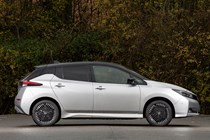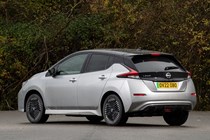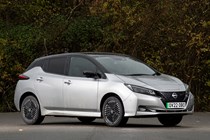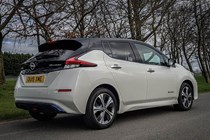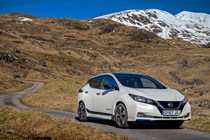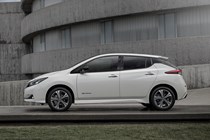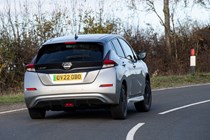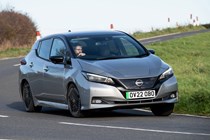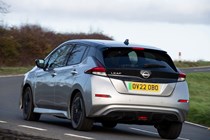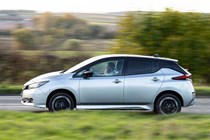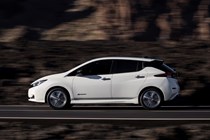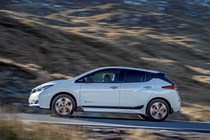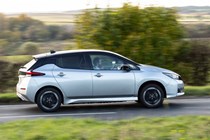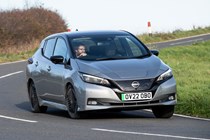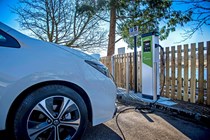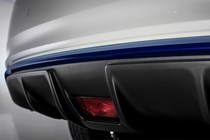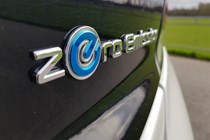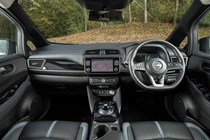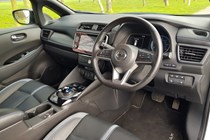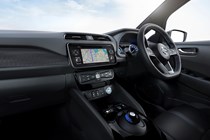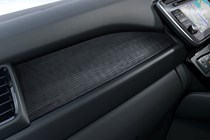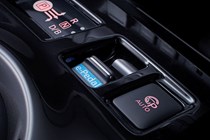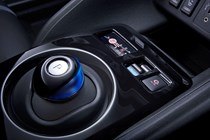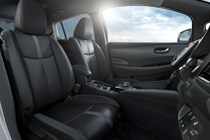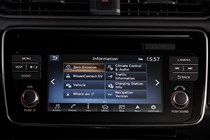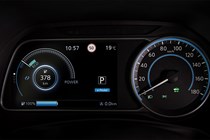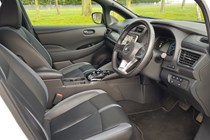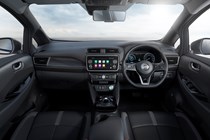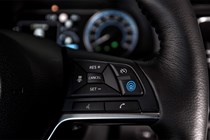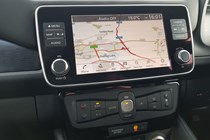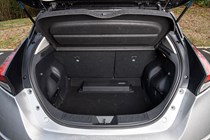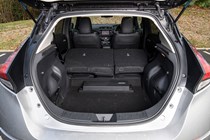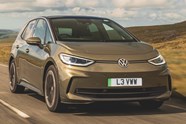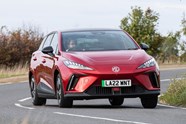
Nissan Leaf review
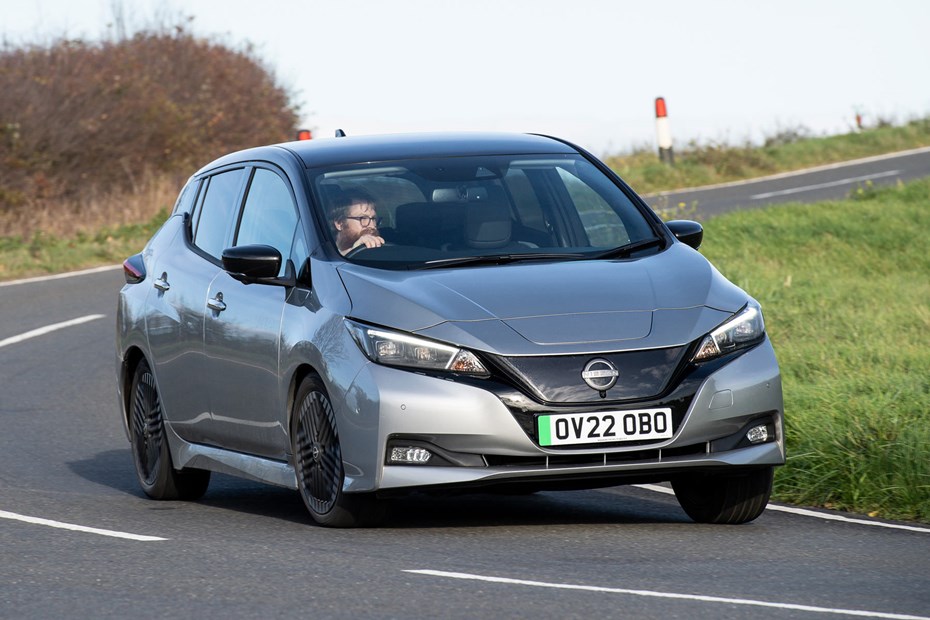
At a glance
| Price new | £28,505 - £32,005 |
|---|---|
| Used prices | £4,552 - £17,284 |
| Road tax cost | £195 - £620 |
| Insurance group | 21 - 28 |
Get an insurance quote with

|
|
| Fuel economy | 3 - 3.7 miles/kWh |
| Range | 168 - 239 miles |
| Miles per pound | 4.8 - 10.9 |
| Number of doors | 5 |
| View full specs for a specific version | |
Available fuel types
Fully electric
Pros & cons
- Quiet, refined and easy to drive
- Intuitive one-pedal driving mode
- Nissan has lots of electric car experience
- Plenty of rivals with greater range
- Outdated infotainment and cabin
- Lacks latest fast-charging capability
Nissan Leaf Hatchback rivals
Overview
When this Mk2 Nissan Leaf was launched back in 2017, Nissan pretty much had the electric family hatchback market to itself and was launching its second-generation EV (electric vehicle) before many carmakers has even gotten around to selling their first. However, the world has moved on, and so have the best electric family cars – making this one of the most competitive areas in the electric car market. It’s perhaps no wonder then that Nissan has now retired this model ahead of a third-generation Leaf EV that’s set to arrive later in 2025.
But while brand new examples of the second-gen Leaf are now official sold out in the UK, there are still plenty of them around. So if you’re considering a nearly new Nissan Leaf, this review will take you through everything you need to know about this model – and explain why maybe you should really take a closer look at something else.
For while this Leaf does benefit from Nissan’s comparatively lengthy EV experience – the original Leaf was one of the very first mass-production electric cars – there are certainly more modern alternatives and a far wider choice of plug-in power than there used to be. The Leaf’s official maximum driving range of more than 200 miles per charge is still reasonably competitive, but its uninvolving driving experience, lacklustre infotainment system and low-speed charging technology feel decidedly out of date.
Making the Leaf’s shortcomings less easy to overlook, buyers now have the option to instead shop for rivals that include the steadfast Volkswagen ID.3, fancy-pants Cupra Born (an ID.3 in funky trousers), the spacious and stylish Hyundai Ioniq 5, and the exceptionally good value MG4. Not to mention a number of similarly sized electric SUVs.
In an attempt to keep things fresh, Nissan launched an updated version of the Leaf in early 2022, with the aim of giving this aging EV a little more kerb appeal. Tweaks include redesigned alloy wheels, new logos and some fresh paint finishes, while the ProPilot driving assistant features and e-Pedal ‘one-pedal’ driving mode continued as before.
Powertrain options also remained the same. Cheaper models came with a 150hp electric motor and a 39kWh battery pack, which offer a maximum driving range of 168 miles, while more expensive Leaf e+ variants came with a more powerful 217hp motor and larger 59kWh battery pack, increasing maximum driving range to 239 (both range figures according to WLTP results).
Charging speeds are barely adequate, unfortunately, when compared with the competition. The fastest type of charger the Leaf can use is a 50kW DC unit, which can top it up from 20 to 80% capacity in around 90 minutes. Most rivals will do the same in a third of that time. It also fails to incorporate the most common rapid-charging connector type, meaning the Leaf can’t even be connected to large numbers of modern fast chargers on the public network, let alone take advantage of their fastest charging speeds.
Still, the Leaf is quite a practical choice, being relatively compact yet feeling more spacious inside than your average petrol-powered family hatchback – especially in the rear. The flat floor gives rear-seat occupants some extra legroom, and also means you can comfortably get three passengers on the rear bench.
Over the next few pages we’ll review every aspect of the Nissan Leaf, discussing our findings on how easy it is to live with, how well the cabin is screwed together, how expensive it is to run and how it drives, before giving our overall verdict. Click through our review to find out whether the Nissan Leaf could suit your lifestyle – or read about how we test cars to find out why you should trust us.



